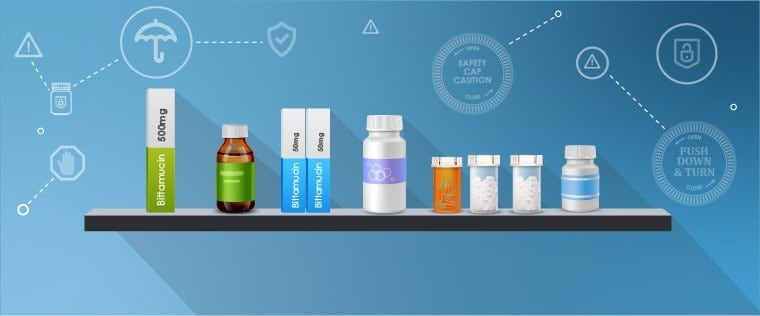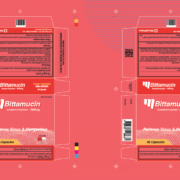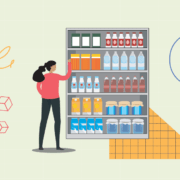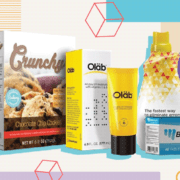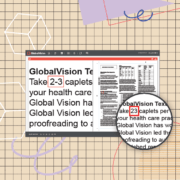5 Ways to Make Your Packaging Child-Resistant
Date: February, 2019 | Category: Proofreading | Author: Mike Malz
There are several reasons why parents tend to keep their medicine stored away in a cabinet that’s too high for their children to reach.
The main reason is simple: Some pills are dangerous for children to ingest and can cause serious harm. Child-resistant packaging, also referred to as “special packaging,” is used to reduce the risk of poisoning in children under the age of five due to how it is significantly more difficult for them to open.
Products such as over-the-counter medicine, pesticides, and household chemicals are potentially hazardous to children. According to the Poison Prevention Packaging Act (PPPA), this does not mean that all packaging or its contents are harmful. This is simply a way for companies to take precautionary measures. Aspirin, some ibuprofen, and mouthwash products are just some that are approved to be child-resistant. But how can businesses apply these child-resistant protocols?
We bring you five ways how to make your packaging child-resistant.
How to Make Your Packaging Child-Resistant
Dexterity: Usually, young children develop their motor skills around eight years old. However, at a younger age, they can push and turn containers and open them, but not simultaneously. The applied force needs to be added to the packaging by a user. Toddlers do not have the strength required to force their way into a package. If companies designed their packaging this way, it would make it more difficult for a child to succeed in opening a container.
Avoid visual cues: Many businesses include visual aids such as shapes and colors to instruct the user on how to open the package. Children are naturally drawn to shapes and bright colors. This can be problematic because, given enough time, they will be able to open the packaging. According to Healthcare Packaging, using visual cues that are unique to adulthood will be unappealing and unrecognizable to toddlers. Using text instructions on labels would also be a better option.
Increasing the packaging size: Making packaging larger is a simple way to make something child-resistant. For instance, if a user needs two fingers to open a container, it should be customized to fit the fingers of an adult. This method, in combination with applied force, would, in turn, make it harder for a child to open the package. The smaller the size of the container, the easier it becomes for young hands to get into it.
Put your packaging to the test: To stay compliant, it’s important to test the packaging and its closure. This is done by performing a routine test with children who are put into groups. Fifty children, usually no more than five years old, are separated into three categories per test. The toddlers are instructed to open the containers with their teeth in a 10-minute time frame. For safety purposes, no more than 200 children can be tested at one time.
Unit-dose packaging: It’s common for most pharmaceutical companies to package their pills in bottles. The small containers have caps that can easily be twisted off, giving children the opportunity to open the bottle freely. Some companies, such as McKesson, have developed packaging that is in a single-dose format. The pills come out with a thumb press to release the medicine from its unit. However, the force needs to be applied to the package, something children do not have as previously discussed.
Testing & Certification Process for Child-Resistant Packaging
One way businesses can test their products is through the Consumer Product Safety Commission (CPSC).
They are a United States government agency that works to “reduce the risk of injuries and deaths from consumer goods products by developing voluntary standards within the industry.” Companies can receive a Certificate of Conformity by sending their products in to be tested. Although the testing process is not publicly available, the types of goods are on their website.
Another valid certification for child-resistant packaging is by complying with the ISO 8317:2015 standard.
The International Organization for Standardization defines this standard as specifying “performance requirements and test methods for reclosable packages designated as resistant to opening by children.” In addition, this method was created to not only provide guidelines to restrict children from accessing packaging, but to also allow adults to easily open packaging.
In other words, it’s a double-edged sword. The ISO 8317:2015 child-resistant packaging standard is updated every few years and the public is notified. However, if anyone wants to see the requirements and the testing procedure, they must purchase the PDF version.
Child-Resistant: Safe Products, Safer Packaging
There are so many elements industry leaders need to consider when developing and designing their packaging. In addition to the most common factors, like a clean design and brand awareness, businesses must also include safety elements.
If companies are concerned about whether their packaging is child-resistant, it would be best to comply with the CPSC or ISO 8317:2015 standard. Having either of these certifications will show that they are taking the necessary precautions to ensure their customers’ health and safety.
Companies need to understand some of their customers are parents and have their own set of worries. These clients want to know the products they’re bringing home are child-resistant. What consumers must also remember is that this “special packaging” should be a last resort when it comes to safety.
Medicines that have the potential to harm children should still be kept out of reach. It is recommended that they are left in medicine cabinets or anywhere higher up and out of sight. Products like medicine and consumer goods are meant to promote the well-being of the public. Businesses need to ensure their packaging is just as safe as the products they are offering.
_________________________________________________________________________________________
Ensure your content is always error-free in record time with GlobalVision. Try it now for free.
Keep up with the latest updates in automated quality control. Sign up for our newsletter.

